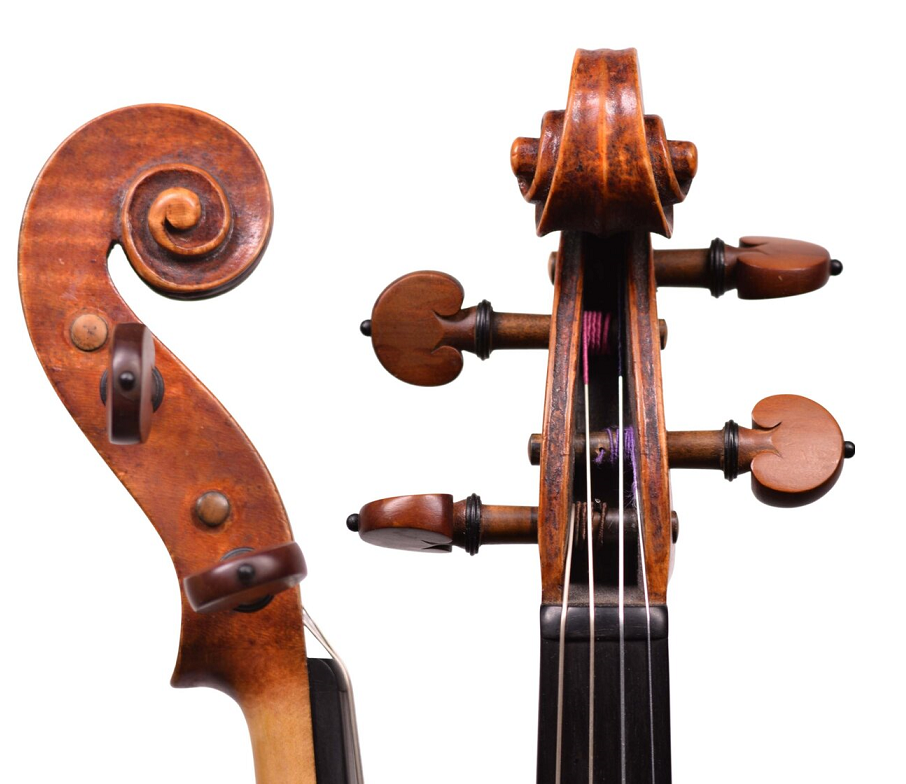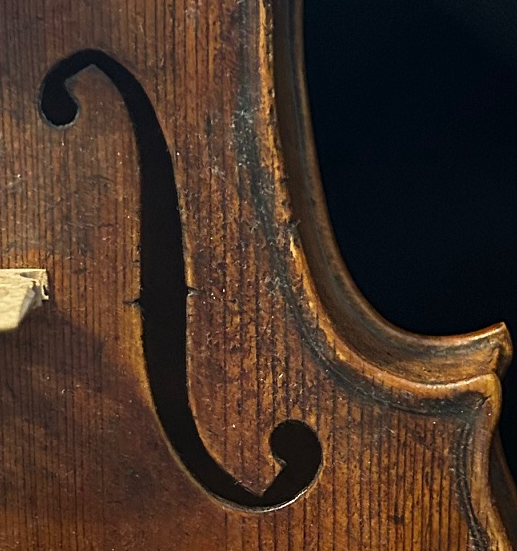
New Instruments
For new instruments, I take inspiration for from the great works of the past, in particular the instruments produced in 18th Century Cremona by the Guarneri family, the later Stradivariuses, the Bergonzi family and Storioni. It’s in these instruments where I find an attractive balance between a strong, holistic concept and evidence of a fluid, almost impressionistic working style. In seeking to imitate this, my recent work has moved away from ‘forensic’ copying to a looser interpretive style, studying extant details of style and construction, and aiming to understand and imitate the methods used by the classical Italian makers in order to arrive at results that are true to the spirit and aesthetic of the originals.
My interpretation of a late ‘Del Gesu’ Guarneri violin, the back of medium figure enhanced by shading and moderate antiquing. Image courtesy of Tim Wright Fine Violins.
Old instruments acquire a certain beauty over time, with complex patterns of wear overwriting the tales of their long and varied existences. This patina can be very beautiful, providing dynamism and contrast, enhancing the forms and curves of the arching. In seeking to imitate this visual effect, I have spent many years developing a varnishing system that not only imitates the basic characteristics of the ground and varnish, but also reproduces the various forms of patina and wear seen on fine old Italian instruments.
Simulated wear on the front of a violin modelled after Gofriller.
I dedicate a great deal of time to setting up instruments, rigorously testing from multiple perspectives both in the white and after varnishing. Small and often overlooked details can be tweaked and adapted to get better acoustic results at various points in the build, and I spend much time scrutinizing and testing every single element of a new instrument in an effort to calibrate the system for maximum acoustic performance. It can be laborious, and might lead to long excursions into major structural changes, but it always pays off in the end, and the moment when a new instrument is finally coaxed into hitting that ‘sweet spot’ and starts putting out that full-throated resonance of a high performing instrument makes the whole process worthwhile. I am convinced this approach has significantly ramped up the projection and power of my instruments, and I invite musicians in search of a professional instrument, or those simply curious about my work, to contact me with a view to trying out my instruments.
Pictured: Back of a violin modelled after Gofriller
Violin scroll modelled after Alessandro Gagliano. Images courtesy of Tim Wright Fine Violins.
Sound-hole in the manner of Testore.





